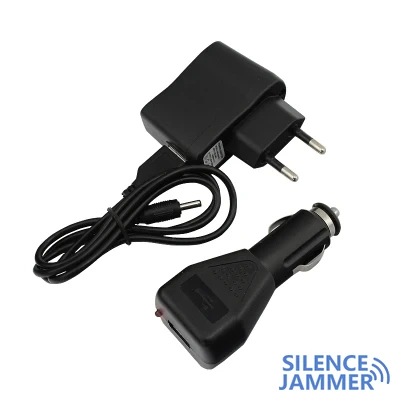With the rapid development of drone technology, its wide application in military, commercial and entertainment fields has caused many safety issues. In order to deal with these potential threats, UAV countermeasures jammers emerged. This article will discuss radio frequency and power testing of UAV countermeasures jammers, aiming to provide readers with the knowledge to understand and effectively apply these devices.

Working Principle of UAV Counter Jammer
The basic principle of UAV counter-jamming is to emit high-power radio frequency interference signals to cover the communication and navigation frequency bands used by UAVs, cutting off their connection with the operator or satellites, and preventing them from operating normally. The main interference frequency bands include:
- Control signal frequency bands: 2.4 GHz and 5.8 GHz, these two frequency bands are the communication bands used by most commercial drones.
- GPS signal frequency band: L1 frequency band (1575.42 MHz), which is a commonly used GPS frequency band for drone navigation.
Radio frequency inspection
- Spectrum analysis
- frequency stability
- Bandwidth measurement
Use a spectrum analyzer to check whether the output frequency of the UAV counter jammer accurately covers the 2.4 GHz, 5.8 GHz and L1 frequency bands. A spectrum analyzer can display a spectrum diagram of the device's emissions, ensuring that interfering signals are within a predetermined frequency range.
Test the frequency stability of the jammer under different temperature and voltage conditions. Frequency offset may lead to reduced interference effect or insufficient interference range. Therefore, frequency stability is an important indicator for inspection.
Detect the bandwidth of the signal transmitted by the jammer. The bandwidth of the interfering signal should be wide enough to cover all communication signals in the target frequency band, but should not be so wide that it affects legitimate communications in other frequency bands.
Power inspection
- Output power measurement
- Power density
- Power stability
Use a power meter to measure the output power of the jammer in different frequency bands. Generally speaking, the higher the output power, the better the interference effect, but it also increases the risk of interference to surrounding electronic equipment. Ensure that the output power is within the designed range of the device, so that it can effectively interfere with the drone without causing too much interference to other devices.
Measures the output power density per unit frequency bandwidth. High power density can improve interference efficiency, but too high power density may exceed safety standards and affect the human body and the environment.
Test the output power stability of the jammer under long-term operation and different environmental conditions. Large fluctuations in output power will affect the interference effect and may even cause damage to the jammer.
Practical application of UAV counter signal jammers
- military defense
- public safety
- privacy protection
UAV counter signal jammers are widely used in many fields, including:
Prevent enemy drones from reconnaissance, interference or attack at military bases and battlefields.
Prevent illegal drone flights and potential threats in government agencies, large events and public places.
In sensitive areas such as prisons, airports, and power plants, drones carrying cameras are prevented from illegally filming or transmitting information.
Use and management
To ensure the effectiveness and safety of UAV counter-jammers, the following points should be noted:
- Legal compliance
- Regular inspection
- Training and Operations
Make sure the equipment is used in compliance with local laws and regulations. High-power jamming devices may require special licenses or authorizations, and illegal use can lead to legal disputes.
Regularly conduct frequency and power inspections on equipment to ensure it is operating at its best. Regular maintenance and calibration can extend equipment life and improve interference effectiveness.
Operators should receive professional training to understand the working principles and operating methods of the equipment to avoid misoperation and misuse.
Drone counter-jammers play an important role in dealing with drone security threats. Through correct radio frequency and power inspection, it can be ensured that the equipment has good interference effect in practical applications. In the future, with the continuous advancement of drone technology and countermeasures technology, countermeasures jammers will become more intelligent and efficient, providing stronger protection for public safety and privacy protection.


